Detection of STEC in Food
The detection of Shigatoxigenic Escherichia coli (STEC) may be one of the most complex topics in food microbiology at the moment… and that’s exactly what makes it exciting.
The aim of this article is to explain as simply as possible what STEC is, what the regulations are, but most importantly, how to detect them in our food.
Here is a simple article on STEC that even chemists would understand 😉
Content :
- What is a STEC?
- The consequences of food contamination
- The matrices concerned
- The regulations
- Detection of STEC in food: The ISO/TS 13136 standard
- Alternative methods
- Conclusion
The 6 best PCR for STEC
The 6 best method for STEC detection
We surveyed the SuperMicrobiologists,
here are the top-rated methods
What is a Shigatoxigenic Escherichia coli (STEC)?
Simply put, a STEC is a strain of Escherichia coli that has the stx gene, responsible for producing Shigatoxins… but if it were just that, it would be too simple! So, let’s get back to basics.
E. coli are gram-negative bacilli, measuring 2 to 4 µm in length and about 0.6 µm in diameter. They are found in the digestive tract of warm-blooded animals.
The majority of E. coli are not pathogenic (fortunately), however, certain strains of E. coli are pathogenic to humans, such as STEC.
Regarding pathogenic STEC strains, it has been found that most of them possess the following virulence genes:
- stx1 and stx2: genes coding for the production of shigatoxin.
- eae: gene coding for intimin (which is a factor favoring the pathogenicity of the strain).
But not all strains of E. coli possessing the stx and eae genes are at the origins of severe human infections due to STEC.
For example in France to determine the most pathogenic STEC bacteria for humans, epidemiological data is used. These data highlight that 5 serotypes are responsible for the majority of infections (O157:H7, O26:H11, O103:H2, O111:H8, O145:H28). These are referred to as the Big 5 or Top 5.
The Consequences of Food Contamination by STEC
If Shiga toxin-producing E. coli (STEC) contaminations had no effect on humans, we wouldn’t talk about it… but unfortunately, that’s not the case.
Each year, STEC is responsible for 1 million illnesses and 128 deaths worldwide, mainly affecting children.
The primary mode of contamination is the ingestion of raw or undercooked food… contaminated by STEC (STEC are easily destroyed by heat).
STEC contamination can cause “simple” diarrhea (even though everyone who has ever had diarrhea knows it’s not that simple!).
But in some cases, and more specifically in children, a person contaminated by STEC can suffer from bloody diarrhea, even leading to Hemolytic Uremic Syndrome (HUS), which can leave lifelong sequels (kidney failure).
Which food matrices are involved in STEC?
For us, microbiologists, what matters is knowing which matrices can potentially be contaminated by STEC. This allows us to know which matrices to test.
To understand which matrices are involved, we need to look at where these strains come from.
Ruminants (cattle, sheep, goats) are considered the major reservoir of these pathogens. They are healthy carriers of STEC, which are mainly found in their digestive tract.
The contamination of “food” occurs at the time of slaughter for meat and at the time of milking for dairy products (bacteria present in feces ending up on the udder).
Therefore, the products most likely to be contaminated by STEC will be meats consumed raw or undercooked.
The products most susceptible to contamination by STEC are therefore raw or undercooked meats and raw milk cheeses (STEC are easily eliminated by heat treatment).
It is also possible for plants to be contaminated (through spreading or following irrigation with contaminated water). Speaking of plants means also considering plant-derived products like flour… which seems to be under the radar at the moment !
STEC Regulations
Each country has its own guidelines or regulation to determine what is considered as a STEC.
France : E.coli with stx and eae gene AND part of the big 5 serogroups O157, O26, O103, O111, and O145.
UK : E.coli with stx and eae gene AND part of the big 7 serogroups.
Germany, Switzerland: All E. coli strains possessing an stx gene.
Italy : Let us know if you know ?
USA : Let us know if you know ?
Any other country… let us know if you know ?
Therefore, care must be taken when exporting a product to a country with different regulations.
Detection of STEC in Foods: The ISO/TS 13136:2012 Standard
Very few countries have STEC regulations, but there is a standard.
This standard is ISO 13136, titled:
Microbiology of food and animal feed. Real-time polymerase chain reaction (PCR)-based method for the detection of food-borne pathogens.
Horizontal method for the detection of Shiga toxin-producing Escherichia coli (STEC) and the determination of O157, O111, O26, O103 and O145 serogroups
This standard allows for the detection of HP (highly pathogenic) STEC strains, possessing the stx, eae genes, and being part of the TOP 5 serotypes in foods
The ISO standard proposes a two-step detection protocol:
- Screening (search for virulence genes and serotypes in the enrichment broth).
- Confirmation (verifying that the “markers detected by PCR in the previous step” come from the same bacterium, a sine qua non condition to consider the bacterium as a STEC).
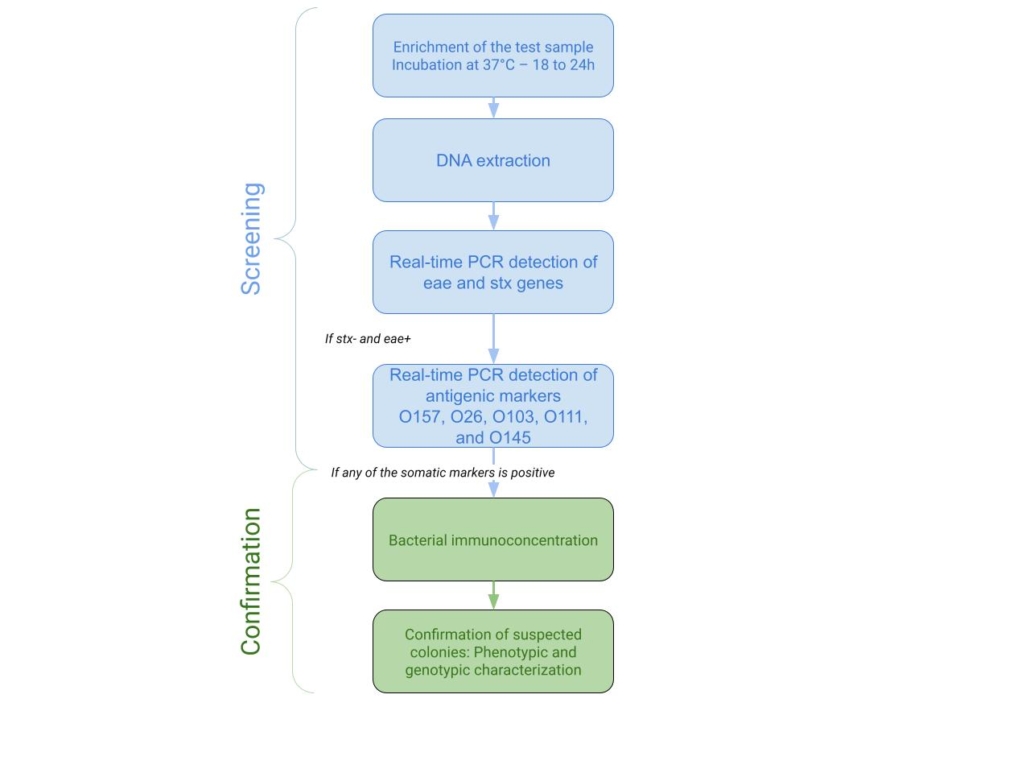
A new version in under construction : ISO/DIS 13136-1 :Microbiology of the food chain. Detection, isolation and characterization of Shiga toxin-producing Escherichia coli (STEC). Part 1: Horizontal method for the detection and isolation of Shiga toxin-producing Escherichia coli (STEC).
It seems that this one will focus on the detection of E.coli strains possessing the stx 1 and stx 2 genes.
Alternative Methods for STEC Detection
These methods, offered by kit suppliers, often have the advantage of being easier to implement than the ISO method.
They also have the benefit of being validated by an independent organization such as AFNOR, MICROVAL, or AOAC.
These methods have their strengths and weaknesses, which will be discussed in another article.
Conclusion regarding STEC Detection
On paper, detecting STEC might seem relatively straightforward, but in practice, it’s far from it. We’ll explain why in the article “Why is detecting STEC so complicated?

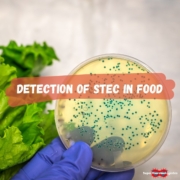
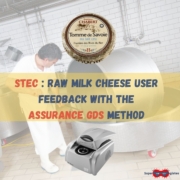

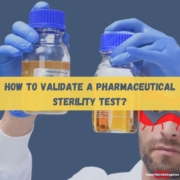
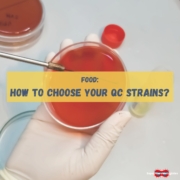



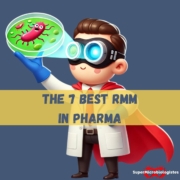







Trackbacks & Pingbacks
[…] explaining what STEC is, why they are complicated to detect, and how to choose the most suitable method for your lab, here […]
[…] We wrote a complete (and simple) article on the definition of STEC. […]
Leave a Reply
Want to join the discussion?Feel free to contribute!